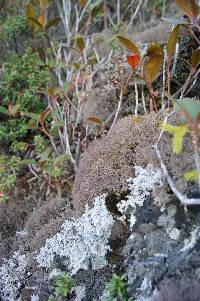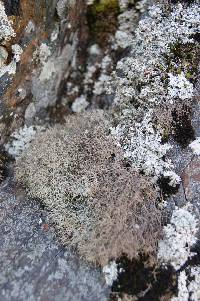
- Home
- Search
- Images
- Species Checklists
- US States: O-Z >
- US National Parks
- Central America
- South America
- US National Parks
- Southern Subpolar Region
|
|
|
|
Family: Cladoniaceae
Appalachian Cladonia
[Cladonia appalachensis Yoshim. & Sharp ex Lendemer & R.C. Harris [orth. error]] |
Assessed as Endangered B1ab(iv,v)+2ab(iv,v), ver 3.1; date assessed: October 6, 2019
DOWNLOAD full IUCN Assessment as PDF Common name(s): n/a ASSESSMENT JUSTIFICATION [criteria: B1ab(iv,v)+2ab(iv,v)] This species warrants an Endangered status because the EOO is <100 km2 (12 km2), the AOO is <500 km2(6 km2), there are fewer than five locations (three total), and a major decline has occurred within the past 100 years (40% inferred decrease). Assessor/s: Lendemer, J., Allen, J. & McMullin, T.; Reviewer/s: Yahr, R.; Facilitator(s) and Compiler(s): Scheidegger, C. Bibliography: Allen, J.L. & Lendemer, J.C. (2016) Climate change impacts on endemic, high-elevation lichens in a biodiversity hotspot. Biodiversity and Conservation 25(3): 555-568. Culatta, K.E. & Horton, J.L. (2014) Physiological Response of Southern Appalachian High-Elevation Rock Outcrop Herbs to Reduced Cloud Immersion. Castanea 79: 182-194. IUCN (2020) The IUCN Red List of Threatened Species. Version 2020-1. Available at: www.iucnredlist.org. (Accessed: 19 March 2020). Lendemer, J.C. & Harris, R.C. (2013) Cladonia appalachensis, belated description of a southern Appalachian lichen endemic from the Great Smoky Mountains. Opuscula Philolichenum 12: 17-22.
Find out more about the IUCN Red List Categories and Criteria here. |














